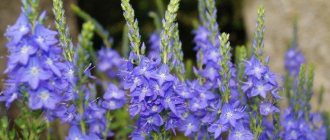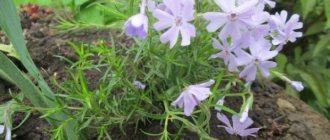Violet is a symbol of delicacy, modesty and beauty. The ancient Greeks, assessing its merits, attributed the purple flower to Aphrodite. In Europe, 92 species of plants belonging to the violet family are known, out of 400 found throughout the world. Violets can be found among rocks, swamps and wetlands, in forests, and meadows. These are the harbingers of spring, so growing them in garden plots allows you to decorate flower beds in early spring and attract nectar-gathering butterflies. It’s worth taking a closer look at what types of violets there are, finding out the varieties with names and photos.
general information
Most violets are perennials, but they are most often grown in the garden as annuals and biennials. This is due to the fact that they grow and lose their decorative effect. Large ovoid or heart-shaped leaves are collected in a basal rosette.
In their natural environment, violets prefer partial shade and open, damp places, regardless of whether they grow in Europe or Africa. Violet flowers are single, with large lower petals, and can be of different shapes and shades. The average height of the bushes is up to 30 cm, but there are also very dwarf varieties.
Violets bloom in spring or summer, depending on the variety. They feel great between trees, near conifers and among bushes. They can also be used to decorate rock gardens, and can also be planted in containers and flowerpots.
Photo: valesad.ru
Using garden violets in home design
The garden violet, which is easy to plant and care for, is indispensable for use in the design of alpine gardens. On slides or flat rock gardens made of stone, it looks especially beautiful and elegant due to its small size, which is further emphasized by the stone.
In the garden, violets are also used to decorate ridges, flower beds and borders. These plants do well among bushes and trees, near bodies of water. They are also suitable for growing in a variety of garden flowerpots, containers and balcony boxes. All kinds of braids with these romantic flowers look very interesting.
Violets behave well in a limited amount of soil - in flowerpots or pots. This plant is best for use in multi-level stands and for creating small and large pot groups.
Fragrant violets are ideal to plant near recreation areas or in front of windows in the front garden.
Types of violets
The choice of violets is so huge that the number of their species has long exceeded 500. But several of them are especially interesting for floriculture!
Fragrant violet
This is a perennial with the same purple, pink or white buds. Its features are heart-shaped leaves, simple or double flowers and a bright aroma due to the high content of essential oils.
Photo: flo.discus-club.ru
Graceful violet
An elegant appearance with serrated textured leaves and large flowers up to 4 cm each. Graceful violets grow best in partial shade, bloom until autumn, but require nutritious soil.
Photo: botanichka.ru
Horned violet
Another perennial, but with a more varied palette of shades. For example, there are even yellow flowers. In addition, they are larger, up to 5 cm in diameter, and have a small horn on the back.
Photo: sad-fialok.ru
Labrador violet
A fragrant compact species up to a maximum height of 10 cm. The leaves of the Labrador violet are bronze or purple, and the buds are deep pink.
Photo: marusin-sad.com
Altai violet
An ideal variety for propagation in the difficult conditions of Siberia. In addition, it is found in nature on the territory of Kazakhstan. Single buds up to 3 cm bloom on long peduncles.
Photo: altzapovednik.ru
Tricolor violet
A field species whose flowers are painted in three colors at once - purple, lilac and yellow. Different varieties can be grown as annuals or perennials.
Photo: vikings-warofclans.ru
Dog violet
Its flowers are very interestingly hidden in the axils of the leaves. It blooms towards the end of spring with medium-sized flowers of all shades of white, blue and lilac. This is a more spreading species.
Photo: fotokto.ru
Wittrock violet
A huge and diverse category of decorative hybrids with an endless choice of shades, shapes and sizes. The showy spotted varieties are especially interesting.
Photo: loudwallpapers.com
Loosestrife (50 photos): types, planting and care in open ground
Growing conditions
Garden violet prefers sunny or slightly shaded places that have fertile, well-drained soil. In dry weather, the plant needs watering, otherwise the flowers become smaller and flowering may stop altogether.
Despite the fact that violets are moisture-loving plants, they cannot tolerate excess moisture and can simply die during the spring thaw.
This plant easily tolerates light shading or diffused light, but the formation of many flowers and abundant flowering is possible only in a well-lit area. In places that are hidden from the sun and exposed to dampness, violets can be damaged by slugs.
The perennial garden violet is increasingly winning the souls of gardeners. They only grow it as an annual or biennial. For the most part, this is due to the fact that over time, the violet stems become very elongated and the flowers decrease in size. It is obvious to everyone that it is easier and faster to plant new plants.
Caring for violets
It is enough to plant a violet correctly once and then admire its beauty for years. It will only be necessary to plant and thin out the flowering carpet in time.
Temperature and lighting
Most varieties for growing in the garden are resistant to cold and frost. But they tolerate heat worse and may stop blooming in direct sunlight and at temperatures above +30 degrees. Lighting preferences depend on the specific variety.
Photo: domashniecvety.ru
Watering
Violets cannot be flooded, so carefully monitor the condition of the soil. For irrigation, you can use slightly acidified water. In hot weather, spray in the morning and evening. The main thing is that the water for all procedures is warm.
Photo: youtube.com
The soil
Violets definitely need loose and light soil that retains moisture well, but does not turn into a swamp. Therefore, be sure to use leavening agents such as vermiculite and sand. It is useful to sometimes add coal or ash. For planting in containers and flowerpots, use ready-made soil mixtures for violets with optimal acidity.
Photo: budgetstories.ru
Fertilizers and fertilizing
Violets need mineral fertilizers for flowering plants, which contain more potassium and phosphorus than nitrogen. We advise you to reduce the dosage relative to the manufacturer's recommendations for other colors. Do not use fresh organic matter because it causes burns.
Photo: aromesdeprovence.ru
Thinning
The thick carpet of violets must be thinned out, because otherwise it is a sure path to fungus and mold. Good air circulation is a must, especially on cool, humid days.
Photo: fotokto.ru
Wintering
With the onset of the first frosts, annual varieties are simply removed along with the root system. For perennials, it is necessary to cut off the flower stalks and all dry parts of the plant. If the winter is snowless, take care of light shelter. Violet reproduces well by self-sowing, so in the spring you can simply select the strongest seedlings.
Photo: lady.mail.ru
Castor bean (50 photos): types, care and planting in open ground
Planting and propagation
Fresh seeds are planted directly into the ground in the fall, and then young shoots appear in the spring. You shouldn’t cultivate one plant for more than 3 years, so the next step is to divide the bush and propagate by cuttings.
If you want to better control the shape and size of the planting, plant the seedlings in containers. In this case, the seeds are sown 1-1.5 months before transplanting to a permanent place. After 1.5-2 weeks in warmth and humidity, but in the dark, seedlings will appear. When real leaves appear, start using fertilizers.
Before transplanting, gradually harden the seedlings by exposing them to air for a couple of hours. When the weather stabilizes, plant the healthiest seedlings with a large number of buds in the garden.
Photo: flowerglossary.com
Pests and diseases of violets
Leaf spotting on violets most often appears due to sunburn or improper spraying of the leaves. But if the spots quickly spread, become covered with plaque and change structure, this is a sure sign of a fungus.
It could be rust with red spots or powdery mildew with a white coating. Regardless of the type of fungal disease, there is only one treatment - remove the damaged parts of the plant and treat everything with fungicides.
Chlorosis occurs due to improper care, and in particular due to a lack of fertilizers. Due to damage to the roots due to improper transplantation and propagation, rot develops. All this can be avoided if you carefully follow agricultural practices.
The most common pest of violets is aphids, which in addition carry viruses and infections. But spraying with warm water and soapy water helps a lot. Also, spider mites, broad mites and cyclamen mites, as well as small sciarid mosquitoes, settle on violets. This requires mandatory treatment with professional insecticides.
White powdery coating may be a sign of mealybugs. With a small number of pests, they can be collected mechanically. For the rest, spraying with warm water and insecticides also helps.
The most dangerous pest is nematodes, which destroy the root system. They are very difficult to notice from the outside, but they leave wounds throughout the plant. Growths and bumps form on the roots, and gradually the plant rots. Violets affected by nematodes need to be removed quickly.
Photo: oldboy.icnet.ru
Muscari (50 photos): types, planting and care in open ground
Garden violet in the urban landscape
Perennial garden violet is actively used in urban landscapes. Photos of flower beds with this plant are unusually picturesque.
Violets are rightfully classified as beautifully flowering herbaceous perennials, but their use in the design of urban ensembles is very limited. Limitations are mainly imposed by their small size and rather short flowering time. This creates difficulties when selecting partners and placing violets in compositions.
For beauty and richness, violets are always placed in groups or spots. The more significant masses they are planted, the more decorative, aroma, and beauty of flowering are revealed.
This is one of the most unique plants for edging beautiful flowering shrubs, rose bushes or forming landscape carpets, which adds picturesqueness and delicate beauty to the entire ensemble.
Violets are also good along the edges of flower beds or mixed borders, where the flowers are planted in the first line so that they can be seen. It’s good if their flowering period coincides with the flowering period of some plant that is planted in the depths of the flower garden.
Violet – photo
Violets are so diverse in color and appearance of flowers that each flower bed is always unique in its own way. At the same time, they clearly retain the common features for which we love them!
Photo: pocvetam.ru
Photo: domashniecvety.ru
Photo: pinterest.ru
Photo: domashniecvety.ru
Photo: liveinternet.ru
Photo: funart.pro
Photo: plantarium.ru
Photo: fotostrana.ru
Photo: stihi.ru
Photo: plantarium.ru
Photo: baltachtan.ru
Photo: mrfilin.com
Photo: gemologyonline.com
Photo: liveinternet.ru
Photo: domashniecvety.ru
Photo: fotoload.ru
Photo: myproplants.com
Photo: mrfilin.com
Photo: sueveriya.com
Photo: m-sokolov.ru
Photo: funart.pro
Photo: svoimirzvetov.ru
Photo: zen.yandex.ru
Photo: zen.yandex.by
Photo: fragrantica.ru
Did you like the post? Subscribe to our channel in Yandex.Zen, it really helps us in our development!











